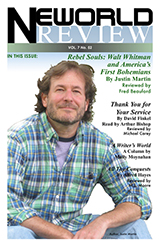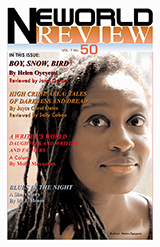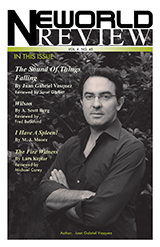
Letter to the Reader:
Obscurity has its merits
I would love considering reviewing this book, but after eight years of telling my precious writers how brilliant they are, I have now lost control of them, and now they just give me the finger, and do whatever they want. The inmates run this place. I just can’t see who I could send this to. How about taking out an ad? With a little money, maybe I can whip them back in line.
--New Boilerplate for the many dozens of requests for book reviews the Neworld Review receives each day
I became addicted to running publications in my twenties, as most of you well know. What you don’t know, because I have never really shared it with anyone, is why?
What is it about what I love doing, which would send most into early retirement, or something even more deadly to the soul—so compelling.
It is the surprises that most turn me on. When a writer drops something on my desk (I call my laptop my desk because I am old fashion) that is something I totally didn’t expect, but was right with what I was hearing just outside of my window, I am always surprised, and totally blown away, even after all these years of doing this kind of work.
In most enterprises, surprises are something you dread, unless you are suddenly surprised at how much more money you are making. Not so with what we do. All surprises, good or bad is mother’s milk. Without them, what could we offer you?
That is the key reason why I let the “inmates” run this magazine. Although I would like complete control and make things orderly, we live in a disorderly world. The disorder my writers bring to me mirrors this world.
Isn’t that much better than sitting in a room, with no one else around, deciding what should be written about, and what shouldn’t?
This is the why of the question I first posed. And please, not so many emails. It’s driving me to drink.
Enjoy this issue of the Neworld Review.
Fred Beauford
Editor-in-Chief
Publisher
This is a heart warming, inspirational book for those who love nature and gardening; and those who enjoy listening to the beautiful songs of the birds.
This Month's Articles
REVIEWING
Infamy: The Shocking Story of the Japanese American Internment in World War Two
By Richard Reeves
Reviewed by Fred Beauford
This Time It’s Personal
For a number of years I ran a small café (Fred’s Café) and bookstore at the Sunday Hollywood Farmer’s Market on Ivar, between Hollywood Blvd, and Sunset.
I was then a member of the Ivar Theater, now owned by the Inner City Cultural Center, an organization I worked for over two decades.
The Ivar Theater was then the most prominent structure on the two blocks, and we had voted to allow the farmers to use our restrooms on Sunday
But someone had to be there by 6:30am to let everybody in. Theater people, as most of you could have guessed, are not noted for being early risers. So, as the only writer on the Board of Directors, I was the one everyone pointed at.
So what! Unlike those actors and actresses and directors, the night offered little for me. I loved getting up early.
My little café and bookstore did well, and I made many friends. One day, the friendly lady that sold me those delicious fuji apples, came out of the restroom, stopped, and pointed to a new book on sale, Farewell to Manzanar, by Jeanne Wakatsuk Houston and James Houston.
“See that little girl in that picture on the cover, that’s me.”
I didn’t know what to say. But, from that brief statement came a history lesson that I knew nothing about: The force internment of Japanese Americans in concentration camps in World War Two, which Richard Reeves covers with remarkable writing skills, excellent research and a voice much like the voice that was ....Read More
PORTFOLIO
Portfolio: Dalai Lama’s Temple in Dharmsala, India
Photography and commentary by Kara Fox
Majestic columns gracefully extend to the ceiling in the vast golden room of the Dalai Lama’s Temple in Dharmsala, India. They are blanketed with strings of bright yellow, dried marigolds. One flower in honor of each monk. And, no doubt, one of these marigolds is there to honor His Holiness, the 14th Dalai Lama.
Braving the chilly morning before the glimmer of the rising sun, we walked in the pitch dark with hundreds of other ’seekers,' along a muddy path filled with rocks and pot holes, careful to avoid the cars, freely roaming cows and dogs, and piles of dung, as we trudged along to the temple.
Through the chaos outside the heavy iron gates, came order once inside. Women separated from men as we were patted down and our bags were checked for electronics, cigarettes & lighters, and even here, in this peaceful line of pilgrims and worshippers, weapons. We were then invited to enter the temple.
Cushions and blankets in hand, we were led to our assigned places on the floor. We were asked to remove our shoes as we sat, and we waited, body to body, while young monks served us fragrant, freshly baked crusty breads out of large silver urns, which were not to be eaten until they were prayed over, and they poured for each of us hot butter tea, which we learned to decline after our first sip.
Of more than 5000 devout Tibetan Buddhists, our small group was invited to sit in the inner room and we saw the Dalai Lama praying gracefully as he seemed to be floating along the open perimeter of the temple. We glanced out over thousands of others sitting on colorful pillows and blankets, many followers dressed in traditional Indian and Tibetan clothing, prayer beads dangling....Read More
REVIEWING
A Spool of Blue Thread
By Anne Tyler
Reviewed by Janet Garber
A Hodgepodge Life
Anne Tyler won me over years ago with her wild tales of domestic life taking place in and around Baltimore, MD. Hard to remember now my first exposure, movie (1988) or book (1985), Accidental Tourist, but who can forget the hilarity of William Hurt doing his laundry and showering at the same time, his sister alphabetizing her canned goods, and nutty, scattered, gorgeous Geena Davis, with her dog training school, landing like an asteroid right in the midst of all these OCD types, daring to upset their ironclad rules and routines
Few describe family life better than Tyler. She patiently reels you in with her characters that, while living a pretty normal structured existence, suddenly break out and do the unthinkable. Sometimes the catalyst is tragedy (Saint Maybe), other times the rule of unintended consequences (Digging to America, Back When We Were Grownups), occasionally, sudden unpremeditated whim.
Unlikely characters decide to shake things up a bit (Ladder of Years), actually quite a lot, and slip into another life entirely (Morgan’s Passing)
The reader never knows what she’s going to get. Exposure to Tyler, however, teaches one to expect some sort of upheaval in the status quo. Somebody will do something unthinkable, ill advised, unconventional or even immoral. Life will be changed forever, for better or worse.
A Spool of Blue Thread is Pulitzer Prize winning author Tyler’s 20th novel and she’s back in familiar territory, mining the fortunes of the Whitshank family over several generations.
On the outside, the Whitshanks present themselves as a close knit clan, financially solid, running a respected family business, living in a grand old house—successful by all the measures we usually apply to others. As Tyler skips....Read More
CONVERSATION
A Conversation With Architect David Tate
By Phillip William Sheppard
At times we are fortunate to have the opportunity to excel at a particular profession, and hopefully do it exceptionally well; however, there are those rare individuals who are truly gifted beyond the exceptional and have talents that are bestowed upon them from the creative force of life.
I met just such a person in architect David Tate. I visited the spectacular home he designed high in the hills of Bel Air, California, and spoke to him about how is it that some architects go to school to learn certain techniques that guides them to realize their unique vision, while developing technical, theoretical and communicative skills which empower them to build intelligent places and beautiful things that improve neighborhoods and communities.
However, in his case, he did not attend any special school, yet has mastered the process of creating structural masterpieces both exteriors and interiors, while incorporating every conceivable aspect of the viewer’s potential experience.
His idea is that “design should be completely organic” with the external environment and achieve an aesthetically beautiful internal environment that will magically capture his artistic intent that the viewer feels naturally at “home”
How does he do this, and who is David Tate?
***
David greets me at the bottom of his drive way. The magnificent home he has designed sits on a plateau that gives a panoramic view of the mighty Santa Monica Mountains.
He offers a warm handshake, and a broad smile that puts me at ease instantly. As I sat down at the center table in his enormous state of the art kitchen, to grab a bite to eat and the water he offers me, I was able to partial read a document he prepared for our meeting.
David Tate, was once a leading advertising producer, with his own production company, and was awarded the prestigious...Read More
REVIEWING
Selected Letters of Langston Hughes
Edited by Arnold Rampersad and David Roessel with Christa Fratantoro
Reviewed by Robert Fleming
Like master writers James Weldon Johnson and James Baldwin, Langston Hughes was one of the most influential forces in African American letters of the last century, keeping his finger on the pulse of the black community through good and bad times. Not only did Hughes’s work serve as a window to this exotic, soulful culture for the curiosity of whites, but he deepened and redefined that experience with his poetry, short fiction, travel pieces, the “Simple” newspaper columns, and plays in his campaign against racism and economic injustice
A few years ago, there appeared another Knopf offering, Remember Me To Harlem: The Letters of Langston Hughes and Carl Van Vechten – 1925-1964, that provided clues to the mystique of the writer in one of his more significant relationships with the celebrated white novelist, photographer and Harlem Renaissance patron, who penned the 1926 controversial novel, Nigger Heaven.
Hughes remained an enigma in that compilation as he does in this new collection, Selected Letters of Langston Hughes, always on the move and never a stationary target.
Although Hughes was considered a relic of a bygone era by the time of the Black Arts Movement, there are several clues to the riddle to be found in the new book on many fronts – personal, political, and literary. Veteran Hughes biographer Arnold Rampersad, with assistance from Roessel and Fratantoro, displays his love of words and correspondence to his family, friends, editors, patrons, and fledgling scribes. Hughes could be witty, funny, sarcastic, bitter, informative, infuriating, and petty. Sometimes he could be all of these things.
Often fans and friends wanted the old Langston Hughes back when he was just starting to make his mark in the literary world, when he wrote his famous 1926 manifesto, “The Negro Artist and the Racial Mountain.” It stated: “We younger Negro artists who create now intend to express our individual dark-skinned selves without fear....Read More
A WRITER'S WORLD
A Writer's World
A Column by Molly Moynahan
A Recipe for Success
"Talent is long patience."
-- Gustave Flaubert
Love this quote. Not just patience but long patience and I would add broad and possibly endless. I published my first novel 27 years ago in a daze of unexpected success and my last novel was published in 2003 when I had decided I would never be published again.
In between, there have been possibly 6 unpublished novels, one just recently killed and I’m working on something new even as we speak. People constantly ask, “Still writing?” and I smile and nod while thinking, “Still breathing?” “Still sleeping?” “Still alive?” It’s what I do and have done ever since I was a kid, I write and I write and I write some more.
Don’t get me wrong, I want to be published, I want to be read, I want to be paid and given teaching jobs based on my talent. I resent some of the writers who have shot forward....Read More
REVIEWING
Why Not Say What Happened
By Morris Dickstein
Reviewed by M. J. Moore
In his new memoir Why Not Say What Happened (an apt line borrowed from poet Robert Lowell), the distinguished critic, professor, scholar, and book author Morris Dickstein adds a particularly telling subtitle: “A Sentimental Education.” Even those who haven’t read Flaubert’s second most famous novel (Sentimental Education is usually alluded to after Madame Bovary) will have no trouble getting the gist of that.
It’s the sort of subtitle (restrained, modest, and tasteful) that is spot-on for this type of restrained, modest, and tasteful memoir. Most importantly of all is that in Why Not Say What Happened, a looming gap is filled. Memoirs abound about coming of age in the 1950s and 1960s, but this one’s different: Books are in this author’s DNA, and therefore the life-transforming effects of studious reading are ultimate issues.
Another great element in Dickstein’s generously spirited autobiography is that he charts the course of a life that repeatedly dovetails with monumental cultural shifts, which have in many other chronicles evolved into clichés about the 1950s and the 1960s. Those decades have been routinely reduced to “conformist” vs. “radical.”
Morris Dickstein was born in 1940 into an extremely conservative, Jewish-American environment on the Lower East Side of New York City. While making his way from his youth as an academic maven in yeshiva school to being a superlative university student of literature and history (Dickstein passed muster at Columbia, Yale, and Cambridge as he segued out of the Fifties and into the Sixties), he constantly noted the connections between past and present. How so?
One example: before Beat poet Allen Ginsberg acquired any respect in the academy, Dickstein clearly ascertained that there was, indeed, a clear and discernible line to be drawn that connected the author of “Howl” with ....Read More
POEM
I Wish, I Was . . .
A Poem by Nora Aharonian
I wish, I was the Summer Sun
shining brightly in the fields of heavens.
Blazing down my golden beams upon the earth
like a celestial spotlight
Warming upon every human heart, tenderly
at this lively audience, at this very historical moment
I wish I were a gentle breeze.
Breaking through this glamorous room invisibly
bringing a crisp freshness....Read More
NOVELLA
A History of The 21st Century
A Memoir By Major Alexander Pushkin Litvinova, U.S. Army, ret.
A Novella by Fred Beauford
Chapter two
Ok, where was I? Bear with me, Father. Ok, I was talking about the bomb. Or Mother? Or Nicky? Or was it Brighton Beach? No, it was the bomb! The Bomb. The famous Bomb!
That beautiful day in October, everyone’s favorite nightmare came true: someone detonated a portable nuclear bomb right in the center of Manhattan. Movies, television dramas and novels have long tried to portray such an event, almost as if everyone knew it was inevitable. But this was no movie, or novel. This was cold-blooded reality.
I could have been there, Father, with me now nothing but a whiff of ash.
My office was near ground zero. But this was a rare, beautiful fall day, and I was thinking about Mother. For some reason, a strong, overwhelming urge to talk to her came over me, an aching almost.
I walked the near empty Brighton Beach all morning, thinking of her, thinking of the California I remembered before the rains came, thinking that a blue ocean was better than a gray one, thinking about how much I had meant to her. I would occasionally nod to a passerby as I walked all the way to Coney Island, and stared once again at the rusted parachute drop, left by a world long, long gone.
I slowly headed back to Brighton Beach. I couldn’t bring myself to get on the D train, or one of the express buses, and make the long ride to my office in Manhattan. I didn’t feel like selling dumb movies, or selling dumb anything for that matter. I felt Mother talking to me.
She was right, whatever she said to that day. She saved my life, Father. She kept me on that near empty beach, just she and I, and her wise conversation. She knew what was going to happen, and reached out and saved me!
At this time, Manhattan was at its peak, the very zenith of its worldwide control. Even powerful Hollywood had packed up and left a cold, wet, dreary California and settled fully in Manhattan and Queens. Hollywood was the last jewel in our crown. Old 20th Century despots like Franco, Idi Amin, Chairman Mao, Peron, Hitler, or mother’s Stalin, could only have....Read More
REVIEWING
An Appalachian Experience: A Reflection on Bill Bryson’s A Walk in the Woods
By Michael Carey
A Walk in the Woods: Rediscovering America on the Appalachian Trail
When the Appalachian Trail, affectionately shortened to the ‘AT’, is mentioned, it evokes a dozen or so descriptive words, maybe more, from people who have heard of it. For anyone who has hiked even a mile on the trail, to talk of the AT may bring up some emotions or personal experience.
But more than either these descriptive words or the feelings of the millions who have set foot on the rocks, dirt, roots, grass, or undergrowth of that nearly 2, 200 mile stretch of nature, much of the U.S. knows the Appalachian Trail through the words and experience of Bill Bryson. His book, A Walk in the Woods: Rediscovering America on the Appalachian Trail, has sparked the interest and imagination of a new wave of hikers.
I set out on my adventure from Georgia without having read Bryson’s book and felt the odd one out. Friends had referred it to me, and I thought I would read it before departing. Time grew short, so I downloaded it to my kindle and hit the trail, starting from Amicola Falls on April 31, 2014. With minimal experience (3 days in the Shenandoah Valley with a friend on a 3 month trek back in 2007) and limited knowledge (reading a preparation guide), I set off in an attempt to complete the estimated 2,185.3 miles of the Appalachian Trail.
From the get go, I heard people mention Bryson’s book with varying opinions: “It’s pretty good”, “It’s funny”, “He didn’t even finish”, or “You know they’re making a movie”. I felt almost instantly like I was up against Bryson. It was irrational. Why should I (or even how could I) compare my experiences with a book I haven’t even read?
But some amazing things happened during the duration of my trip ....Read More
ABOUT TOWN
A Man About Town
By Phillip William Sheppard
I purchased Gondwana: Images of an Ancient Land, and met briefly with world-renowned photographer Diane Tuft at a book signing at Hennessey + Ingalls Santa Monica. What makes Tuft’s photographs unique are that they capture the visual effects of ultraviolet and infrared light waves; they present a remote and ancient landscape through a technique that reveals what cannot be seen with the naked eye.
Elizabeth Sussman, the Curator of Photography at the Whitney Museum of American Art, comments that “Tuft’s work strives to give these phenomena, this reality, the power to self- reproduce, straddling a space, like the work of [Ansel] Adams before her, where the photographic process and aesthetic instinct meet the politics that come with documenting something that is at once new, objectively beautiful, unspoiled, and endangered.”
I asked Diane what made her start photographing and she related “It was a spiritual journey. Landscape had so much to offer us that we couldn't see or understand. In order to understand landscape I needed to see through it. If I could reach the spectrum outside of our visible, perhaps I could understand it better. My journey to understand the spirit of the landscape of the earth, forced me to notice landscape's change. Through my photographs, I hope to bring attention to climate change and....Read More
REVIEWING
Stone Harbor Bound
By Madeleine Mysko
Reviewed by Hillary Mohaupt
There are books that introduce readers to a new place and, over the course of the narrative, help readers form an emotional connection to that place. And then there are books like Madeleine Mysko’s novel Stone Harbor Bound, which are set in places many readers know from summer tourism guides and reality TV.
Books like Stone Harbor Bound help both the protagonist and the readers discover a new side of a place they thought they knew.
Stone Harbor Bound is set in a beach town on the Jersey Shore, but it’s not a beach novel. The novel follows Camille Pickett, an emergency room nurse who has just lost her partner, Bridget Gallagher, who is part of a messy, tight-knit family guided by traditions and faith that are foreign to Camille. The back blurb says that in the aftermath of Bridget’s death, “all [Camille] has to do now is make a decision about the small bungalow she inherited.”
There is, of course, nothing so simple about making decisions about a deceased loved one’s possessions, but even as we first meet Camille on her drive from her home in Baltimore to the beach house in Stone Harbor, we see that she strives in all things to be the take-charge nurse, the “pathological rescuer.”
It’s not long before the reader sees her....Read More
Neworld Review
Vol. 8 No 57 - 2015
Editor-in-Chief
/Publisher
Fred Beauford
Online Managing Editor
Richard D. O'Brien
Associate Editor
Sally Cobau
Editor-at-Large
Jan Alexander
Senior Editors
Molly Moynahan
Jane M. McCabe
Art Director
Bernie Rollins
Director of Photography
Kara Fox
Associate Publisher
Phillip William Sheppard
President
Alexis Beauford
Contributing Writers
Jane Smiley
Janet Garber
Herb Boyd
Brenda M. Greene
Robert Macbeth
Michael Carey: Audio Books
Steve Fisch: Portfolio
Michael J. Moore
Phillip William Sheppard: Man About Town
The Neworld Review is a publication of Fred Beauford, 3183 Wilshire Blvd,
Suite 196,
Los Angeles, CA. 90010.
Material in this publication may not be reproduced in whole or in part without permission. Opinions expressed by contributors do not necessarily reflect the views of the publishers.
Manuscripts should be accompanied by a self-stamped envelope. Online submissions are accepted at [email protected].
Neworld Review cannot be held responsible for unsolicited photographs or manuscripts.
All correspondence to:
Fred Beauford
Editor-in Chief/Publisher
Neworld Review
3183 Wilshire Blvd,
Suite 196,
Los Angeles, CA. 90010
Archived Issues


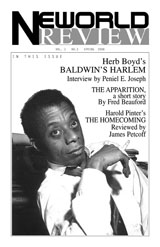











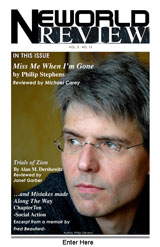

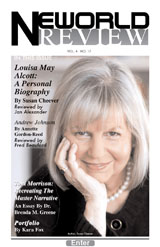







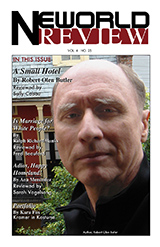



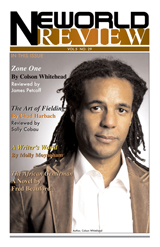






Digital favorites
- Non Gamstop Casinos UK
- Casinos Not On Gamstop
- Mejores Casinos Online
- Siti Casino Non Aams
- Casinos Not On Gamstop
- Gambling Sites Not On Gamstop
- Non Gamstop Casinos
- Online Casinos UK
- Best Non Gamstop Casinos
- Casino En Ligne
- UK Casinos Not On Gamstop
- Best Casino Sites Not On Gamstop 2025
- Best Non Gamstop Casinos
- Mejores Casas Apuestas Online
- Siti Casino Online Non Aams
- Top UK Casino Sites
- Meilleur Casino En Ligne Fiable
- Meilleur Casino En Ligne
- Non Gamstop Casino
- Casinos Not On Gamstop
- Slots Not On Gamstop
- Non Gamstop Casino
- Casinos Not On Gamstop
- Siti Casino Online Non Aams
- Lista Casino Online Non Aams
- Siti Casino
- Meilleur Casino En Ligne En Belgique
- Site De Paris Sportif Bonus
- Crypto Bookmaker
- українські онлайн казіно
- Casino Jeux En Ligne




